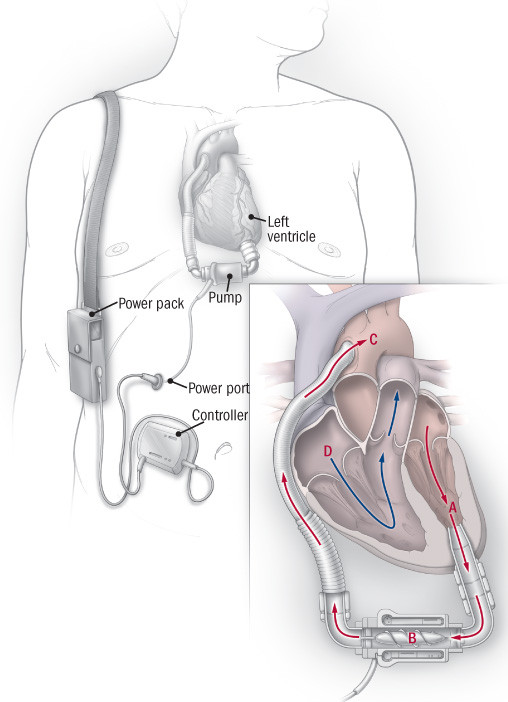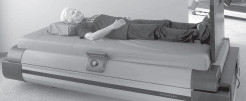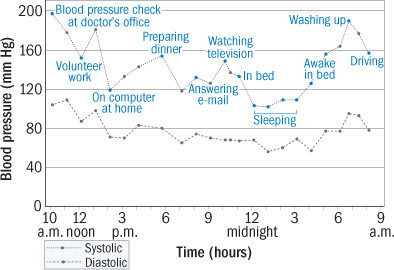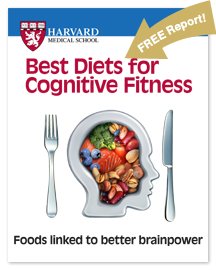Recent Blog Articles

How — and why — to fit more fiber and fermented food into your meals

Tick season is expanding: Protect yourself against Lyme disease

What? Another medical form to fill out?

How do trees and green spaces enhance our health?

A muscle-building obsession in boys: What to know and do

Harvard Health Ad Watch: New drug, old song, clever tagline

Concussion in children: What to know and do

What color is your tongue? What's healthy, what's not?
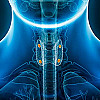
Your amazing parathyroid glands

When — and how — should you be screened for colon cancer?
Medical Devices & Technology Archive
Articles
Dual-chamber pacemaker helps heart failure
A heart attack, high blood pressure, and other insults can reshape the heart in ways that derail the "beat now" signals that are vital to a healthy heartbeat. The two lower chambers, the right ventricle and left ventricle, should contract and relax together. In many people with heart failure, though, they don't. This loss of synchronized squeezing costs the heart some of its pumping power.
A biventricular pacemaker can fix this problem. It sends carefully timed signals that make the right and left ventricle contract and relax in unison. This is called cardiac resynchronization therapy. Biventricular pacemakers were initially approved for people with severe heart failure. Greater experience with them will almost certainly broaden the population of folks who could benefit from one.
Ask the doctor: Could getting a pacemaker have damaged my vagus nerve?
Q. I recently had a pacemaker implanted. While the process was going on, I felt a pulsation that I reported to the doctor. I still feel it seven months later. Other symptoms include low blood pressure, an increase in weight, and digestive changes. My primary care doctor thinks that my vagus nerve could have been damaged when the pacemaker was implanted. Is that possible?
A. I don't have enough information to comment on your case. In general, pacemaker placement rarely damages the vagus nerve, which runs from the brain to the throat, voice box, windpipe, lungs, heart, esophagus, stomach, and intestines. Symptoms such as you describe could be caused by a number of problems, including lead perforation or pacemaker syndrome. Here is more information on those problems:
Tiny pumps can help when heart failure advances
Left ventricular assist devices support the heart while waiting for — or in place of — a heart transplant.
What can be done for a failing heart when medications no longer help? A transplant is one option, but there aren't nearly enough donor hearts to meet the need. An artificial heart may someday fill the void, but one isn't yet ready for widespread use.
January 2011 references and further reading
Top five habits that harm the heart
Kvaavik E, Batty GD, Ursin G, Huxley R, Gale CR. Influence of individual and combined health behaviors on total and cause-specific mortality in men and women: the United Kingdom health and lifestyle survey. Archives of Internal Medicine 2010; 170:711-8.
Myint PK, Luben RN, Wareham NJ, Bingham SA, Khaw KT. Combined effect of health behaviours and risk of first ever stroke in 20,040 men and women over 11 years' follow-up in Norfolk cohort of European Prospective Investigation of Cancer (EPIC Norfolk). BMJ 2009; 338:b349.
On the horizon: Exercise at rest - no longer an oxymoron?
The phrase "exercise in bed" conjures images of sex, a fine way to engage in a little physical activity. Miami-based Non-Invasive Monitoring Systems has a different idea, called whole-body periodic acceleration, that may help people who can't exercise in traditional ways.
Instead of moving yourself, whole-body periodic acceleration moves you — shakes you, really — using a special bed called the Exer-Rest that moves back and forth in the head-to-foot direction 140 times a minute. Your feet are strapped firmly to the foot of the bed, so you move with it. This motion mimics the effect of exercise on the arteries as they experience faster, stronger, quicker pulses of blood. Both exercise and whole-body periodic acceleration stimulate the inner lining of blood vessels to release nitric oxide, which tells blood vessels to relax. This improves blood flow throughout the body.
Nanoburrs seek, heal injury in artery
Imagine a legion of microscopic healers patrolling the bloodstream to find and fix injured artery walls. That's the idea behind tiny drug-carrying particles called nanoburrs that have been developed by a team from the Massachusetts Institute of Technology and Harvard Medical School.
Nanoburrs are spheres 60 billionths of a meter (60 nanometers) in diameter. Thousands of them could sit on the period at the end of this sentence. Each has an inner core containing a drug linked to a slowly degradable polymer known as polyethylene glycol. The core is surrounded by a single layer of fat derived from soybeans. The outer wall is another polymer that protects the particle as it travels through the bloodstream. Coating the outer wall are protein fragments that resemble burrs, the hooks that bristle around the outside of certain seeds. In this case, the researchers created burrs that stuck to proteins found in the lining of blood vessels. In a healthy artery, these proteins are hidden by other tissues. In an injured artery, they are exposed to nanoburrs circulating through the bloodstream.
On the horizon: An ICD that works without wires
Implantable cardioverter-defibrillators (ICDs) are small devices that detect potentially deadly heart rhythms, stop them with an electric shock, and restore a normal heart rhythm. Although ICDs are generally implanted in older people who have survived a heart attack, another use is in younger people whose seemingly healthy hearts lapse into the fast or erratic rhythms known as ventricular tachycardia and ventricular fibrillation.
Traditional ICDs are connected to the heart via thin wires called leads (pronounced leeds) placed through a large vein and then into the heart. Placing the leads through the vein is one of the trickiest parts of the procedure, and leads sometimes fail.
Experts call for home blood pressure monitoring
About 73 million Americans — nearly half of them women — have hypertension (high blood pressure), a condition that propels blood too forcefully through blood vessels, increasing the risk of heart attack, heart failure, stroke, and kidney damage. If you have hypertension or borderline hypertension, you should be checking your blood pressure at home on a regular basis. That's the major recommendation in a joint statement from the American Heart Association (AHA), the American Society of Hypertension (ASH), and the Preventive Cardiovascular Nurses Association (PCNA).
The expert panel that issued the statement was chaired by Dr. Thomas G. Pickering of Columbia University. The statement itself was jointly published online May 22, 2008, in the journal Hypertension and the Journal of Cardiovascular Nursing and in print in the Journal of the American Society of Hypertension (May 2008) and the Journal of Clinical Hypertension (June 2008). Although other guidelines on managing hypertension have endorsed home blood pressure monitoring, this is the first time experts have given detailed advice about its use.
Recent Blog Articles

How — and why — to fit more fiber and fermented food into your meals

Tick season is expanding: Protect yourself against Lyme disease

What? Another medical form to fill out?

How do trees and green spaces enhance our health?

A muscle-building obsession in boys: What to know and do

Harvard Health Ad Watch: New drug, old song, clever tagline

Concussion in children: What to know and do

What color is your tongue? What's healthy, what's not?

Your amazing parathyroid glands

When — and how — should you be screened for colon cancer?
Free Healthbeat Signup
Get the latest in health news delivered to your inbox!
Sign Up


